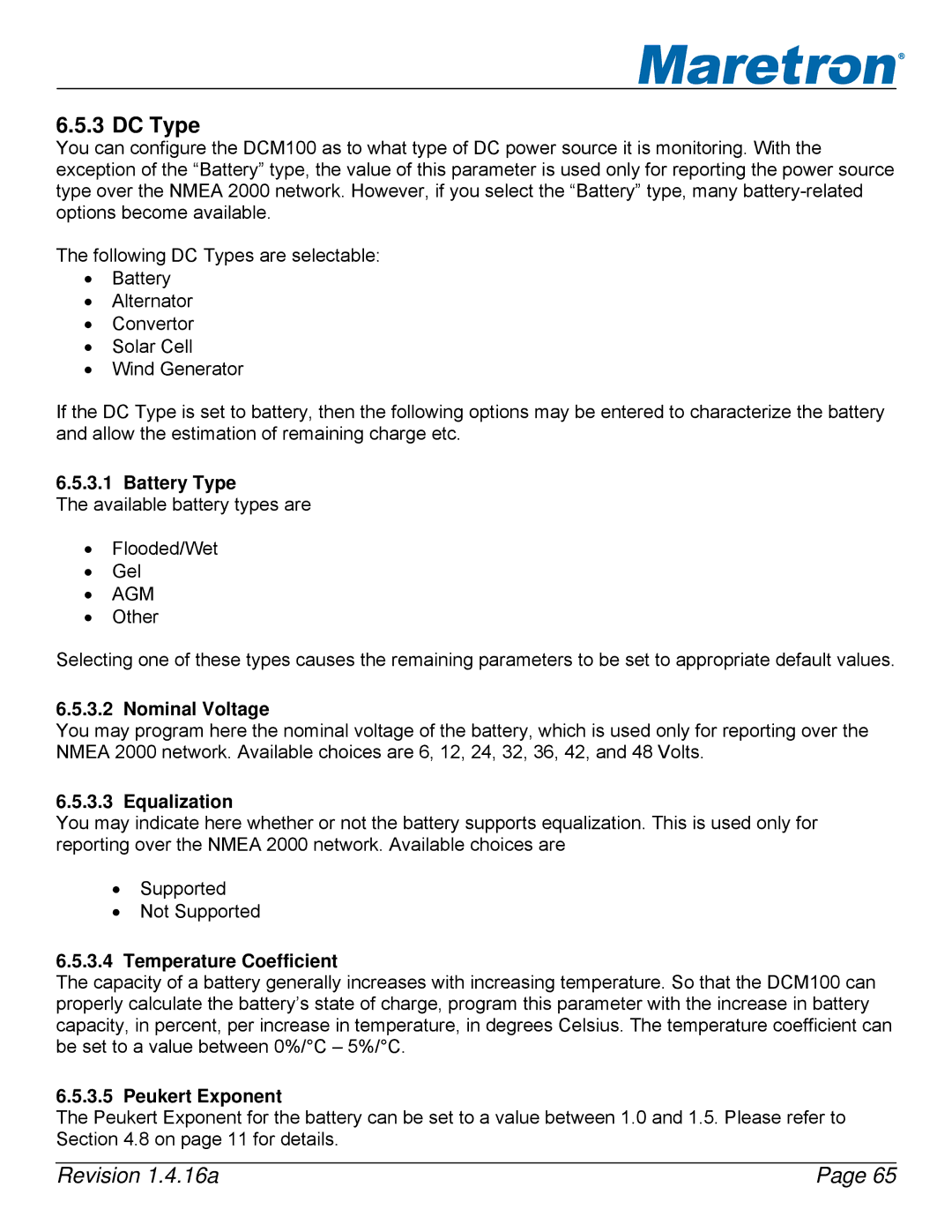
®
6.5.3 DC Type
You can configure the DCM100 as to what type of DC power source it is monitoring. With the exception of the “Battery” type, the value of this parameter is used only for reporting the power source type over the NMEA 2000 network. However, if you select the “Battery” type, many
The following DC Types are selectable:
•Battery
•Alternator
•Convertor
•Solar Cell
•Wind Generator
If the DC Type is set to battery, then the following options may be entered to characterize the battery and allow the estimation of remaining charge etc.
6.5.3.1 Battery Type
The available battery types are
•Flooded/Wet
•Gel
•AGM
•Other
Selecting one of these types causes the remaining parameters to be set to appropriate default values.
6.5.3.2 Nominal Voltage
You may program here the nominal voltage of the battery, which is used only for reporting over the NMEA 2000 network. Available choices are 6, 12, 24, 32, 36, 42, and 48 Volts.
6.5.3.3 Equalization
You may indicate here whether or not the battery supports equalization. This is used only for reporting over the NMEA 2000 network. Available choices are
•Supported
•Not Supported
6.5.3.4Temperature Coefficient
The capacity of a battery generally increases with increasing temperature. So that the DCM100 can properly calculate the battery’s state of charge, program this parameter with the increase in battery capacity, in percent, per increase in temperature, in degrees Celsius. The temperature coefficient can be set to a value between 0%/°C – 5%/°C.
6.5.3.5 Peukert Exponent
The Peukert Exponent for the battery can be set to a value between 1.0 and 1.5. Please refer to Section 4.8 on page 11 for details.
Revision 1.4.16a | Page 65 |
